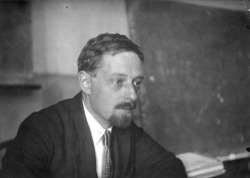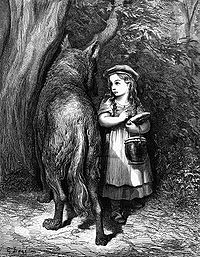Vladimir Propp was born on April 17, 1895 in St. Petersburg to a German family. He attended St. Petersburg University (1913-1918) majoring in Russian and German philosophy.[1] Upon graduation he taughtRussian and German at a secondary school and then became a college teacher of German.
His Morphology of the Folk Tale was published in Russian in 1928. Although it represented a breakthrough in both folkloristics and morphology and influenced Claude Lévi-Strauss and Roland Barthes, it was generally unnoticed in the West until it was translated in the 1950s. His character types are used in media education and can be applied to almost any story, be it in literature, theatre, film, television series, games, etc.
His Morphology of the Folk Tale was published in Russian in 1928. Although it represented a breakthrough in both folkloristics and morphology and influenced Claude Lévi-Strauss and Roland Barthes, it was generally unnoticed in the West until it was translated in the 1950s. His character types are used in media education and can be applied to almost any story, be it in literature, theatre, film, television series, games, etc.
Characters
He also concluded that all the characters could be resolved into only 7 broad character types in the 100 tales he analyzed:
He also concluded that all the characters could be resolved into only 7 broad character types in the 100 tales he analyzed:
- The villain — struggles against the hero.
- The donor — prepares the hero or gives the hero some magical object.
- The (magical) helper — helps the hero in the quest.
- The princess and her father — gives the task to the hero, identifies the false hero, marries the hero, often sought for during the narrative. Propp noted that functionally, the princess and the father can not be clearly distinguished.
- The dispatcher — character who makes the lack known and sends the hero off.
- The hero or victim/seeker hero — reacts to the donor, weds the princess.
- [False hero] — takes credit for the hero’s actions or tries to marry the princess.
Vladimir Propp extended the Russian Formalist approach to narratology (the study of narrative structure). Where, in the Formalist approach, sentence structures had been broken down into analysable elements - morphemes - Propp used this method by analogy to analyse folk tales. By breaking down a large number of Russian folk tales into their smallest narrative units - narratemes - Propp was able to arrive at a typology of narrative structures. By analysing types of characters and kinds of action, Propp was able to arrive at the conclusion that there were thirty-one generic narratemes in the Russian folk tale. While not all are present, he found that all the tales he analysed displayed the functions in unvarying sequence.Try applying these to Star Wars or episodes of X-Files or Star Trek - It can be interesting to see how powerful are the narrative structures of folk mythology, and how they are continually reinserted into contemporary popular culture. The functions he described were as follows:After the initial situation is depicted, the tale takes the following sequence:
- A member of a family leaves home (the hero is introduced);
- An interdiction is addressed to the hero ('don't go there', 'go to this place');
- The interdiction is violated (villain enters the tale);
- The villain makes an attempt at reconnaissance (either villain tries to find the children/jewels etc; or intended victim questions the villain);
- The villain gains information about the victim;
- The villain attempts to deceive the victim to take possession of victim or victim's belongings (trickery; villain disguised, tries to win confidence of victim);
- Victim taken in by deception, unwittingly helping the enemy;
- Villain causes harm/injury to family member (by abduction, theft of magical agent, spoiling crops, plunders in other forms, causes a disappearance, expels someone, casts spell on someone, substitutes child etc, comits murder, imprisons/detains someone, threatens forced marriage, provides nightly torments); Alternatively, a member of family lacks something or desires something (magical potion etc);
- Misfortune or lack is made known, (hero is dispatched, hears call for help etc/ alternative is that victimised hero is sent away, freed from imprisonment);
- Seeker agrees to, or decides upon counter-action;
- Hero leaves home;
- Hero is tested, interrogated, attacked etc, preparing the way for his/her receiving magical agent or helper (donor);
- Hero reacts to actions of future donor (withstands/fails the test, frees captive, reconciles disputants, performs service, uses adversary's powers against them);
- Hero acquires use of a magical agent (directly transferred, located, purchased, prepared, spontaneously appears, eaten/drunk, help offered by other characters);
- Hero is transferred, delivered or led to whereabouts of an object of the search;
- Hero and villain join in direct combat;
- Hero is branded (wounded/marked, receives ring or scarf);
- Villain is defeated (killed in combat, defeated in contest, killed while asleep, banished);
- Initial misfortune or lack is resolved (object of search distributed, spell broken, slain person revivied, captive freed);
- Hero returns;
- Hero is pursued (pursuer tries to kill, eat, undermine the hero);
- Hero is rescued from pursuit (obstacles delay pursuer, hero hides or is hidden, hero transforms unrecognisably, hero saved from attempt on his/her life);
- Hero unrecognised, arrives home or in another country;
- False hero presents unfounded claims;
- Difficult task proposed to the hero (trial by ordeal, riddles, test of strength/endurance, other tasks);
- Task is resolved;
- Hero is recognised (by mark, brand, or thing given to him/her);
- False hero or villain is exposed;
- Hero is given a new appearance (is made whole, handsome, new garments etc);
- Villain is punished;
- Hero marries and ascends the throne (is rewarded/promoted).


